Cardboard Boxes Recycling Tips to Use at Home
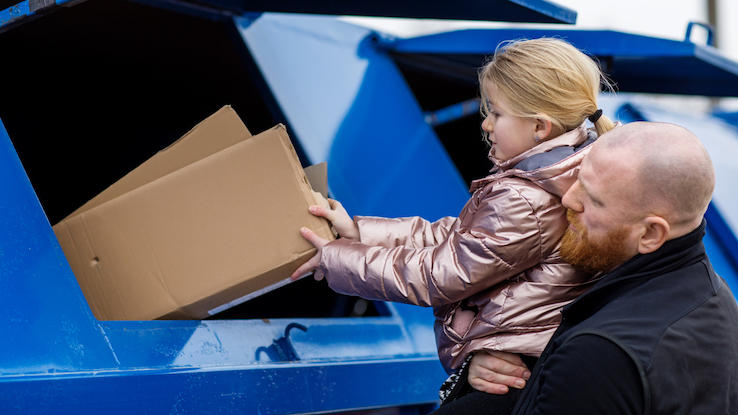
With online shopping and food deliveries on the rise, it’s not uncommon to end up with a few cardboard boxes stacked near your back door or trash can. But don’t forget that recycling cardboard is a great way to do your part to help the environment and cut down on waste. Join us to look at why recycling cardboard is so important and learn some tips on recycling it efficiently.
Why Is Cardboard Recycling Important?
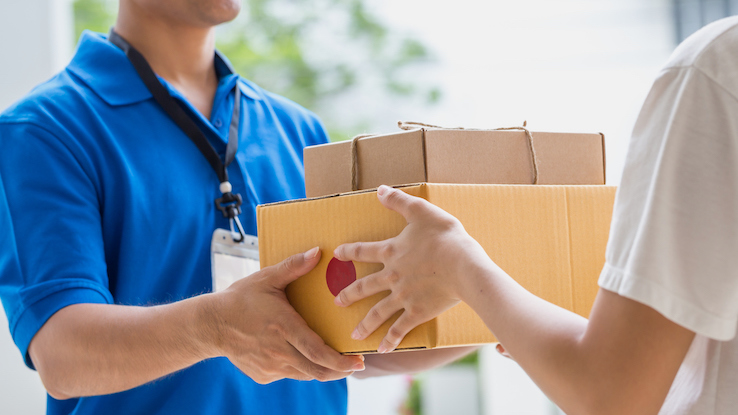
Did you know that up to 90% of products in the United States are shipped in packaging made of cardboard? As a result, the typical American household tosses out an average of around 13,000 pieces of cardboard every year, even though most of it could be recycled up to seven times.
According to Recycle Across America, the U.S. recycling rate currently hovers somewhere around the 21% range. That’s a good start, but the organization estimates that if we could up our recycling rates to 75%, it could have the same environmental benefits as taking 55 million cars off the roads every year. Not only that, but it could also create roughly 1.5 million jobs in the recycling industry, which would give the U.S. economy a nice boost in the process.
Recycling cardboard can also help by saving everything from trees and water to landfill space and energy. According to some estimates, cardboard accounts for up to 40% of municipal waste dumped in landfills. Unfortunately, all that cardboard is going to waste; every ton of recycled cardboard paper could save anywhere from 12 to 31 trees from being chopped down to create new cardboard.
Additionally, producing cardboard and other paper products requires a great deal of water. Recycling materials (and using those recycled materials instead of new ones) could cut down the current water-usage rate by 80%. Last but not least, recycling cardboard can save energy that can be used to produce other resources and help lower harmful pollution levels.
How to Recycle Cardboard Correctly
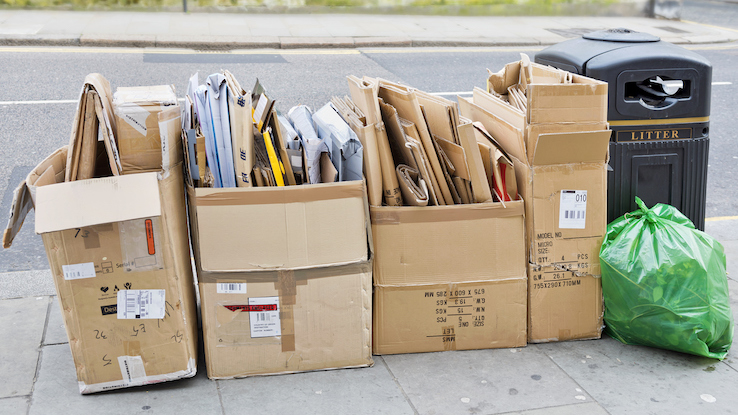
The good news is that recycling cardboard is not only helpful, but it’s easy as well. The first step is to ensure that you’ve removed any materials from inside the box, including plastic packaging, styrofoam or packing peanuts.
Next, you’ll want to break down the box. This is usually as simple as finding a handy object to cut through the tape that holds the box in a structured, upright position. Once this is done, the cardboard should fold right down along its creases or seams. That makes it more compact and easy to handle.
At this point, you may or may not also want to remove any shipping labels that are attached to the box. This is usually unnecessary as far as recycling goes, but some people prefer to do it simply to keep their name and address from falling into the wrong hands.
All that’s left to do is toss your cardboard boxes into the nearest recycling bin, set them out for curbside pickup or deliver them to your local recycling facility. The only thing you may want to keep in mind is that it’s best not to put cardboard outside if it’s raining, as it needs to be dry to get recycled.
Common Questions About Cardboard Recycling
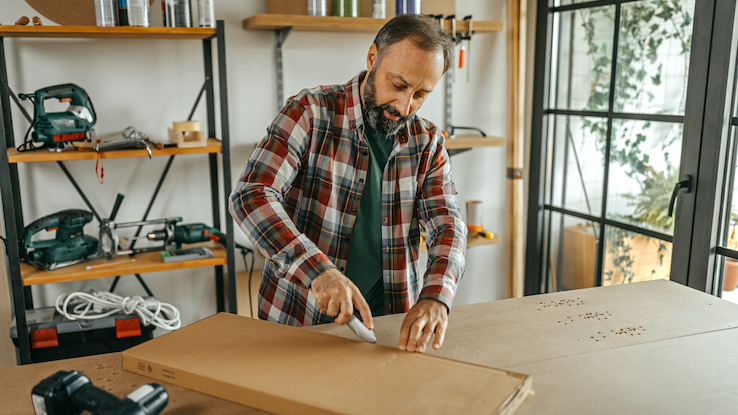
If you’re new to recycling cardboard, you may have a few questions about other important considerations that go into the process. Let’s delve into some commonly asked questions and their answers.
Do I need to remove labels and tape from cardboard boxes before recycling them?
Generally, this isn’t something you have to worry about. It’s a wise idea to check the local guidelines in your community just to be sure. However, many recycling centers are set up to take care of this part of the process for you.
Can I recycle all types of cardboard?
While you can recycle most cardboard boxes used for shipping, there are a few types that you may not be able to recycle. Whether or not you can recycle things like pizza boxes depends on how clean they are. That’s because oil and other stains can contaminate the recycling process.
Additionally, some containers designed to hold food have thin layers of plastic between or lining the cardboard layers. This is common in items like takeout boxes and single-use coffee cups. Because it’s hard to break apart these types of plastic-and-cardboard combinations, you typically cannot recycle these items.
How should I recycle if I don’t have a recycling bin?
If you don’t already have a recycling bin, then you may be able to get one for free. Check with your local sanitation department to see if it provides bins for residents. If not, ask about the easiest ways to recycle in your area. These days, many towns offer curbside pickup and other convenient services to encourage more people to recycle. You may be able to find information about your city’s recycling program on its website.
Alternative Cardboard Recycling Strategies
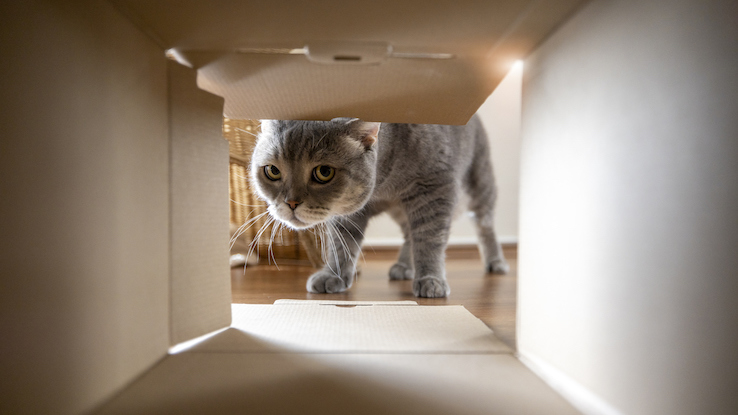
One of the upsides to cardboard boxes is that they happen to have a variety of handy uses once they’re done serving their original purpose. You can repurpose old boxes you have sitting around the house in some fun and helpful ways.
If you’re starting to compost at home, cardboard boxes can make a great addition to your compost pile. Just make sure to remove any tape, labels and other adhesives or plastic that could contaminate your latest batch. Both wet and dry cardboard can be composted, but breaking your cardboard down into smaller pieces before adding it to your compost helps to accelerate the process.
Cardboard boxes make great places to store everyday household items and cut down on the need to buy plastic bins for storage. If you don’t currently need them yourself, you may find someone to take them off your hands by simply asking around to see if anyone you know could use any. If you have a larger collection of boxes, consider posting about it on your neighborhood’s social media page — someone who’s moving might be interested in them.
Some people save their old cardboard boxes in their garage for later use. You can use them for your own shipping needs, as floor coverings when you’re painting or even as an exciting new fort for a curious dog or cat.





